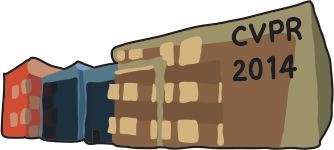-
Second-Order Shape Optimization for Geometric Inverse Problems in Vision
AbstractWe develop a method for optimization in shape spaces, i.e., sets of surfaces modulo re-parametrization. Unlike previously proposed gradient flows, we achieve superlinear convergence rates through an approximation of the shape Hessian, which is generally hard to compute and suffers from a series of degeneracies. Our analysis highlights the role of mean curvature motion in comparison with first-order schemes: instead of surface area, our approach penalizes deformation, either by its Dirichlet energy or total variation, and hence does not suffer from shrinkage. The latter regularizer sparks the development of an alternating direction method of multipliers on triangular meshes. Therein, a conjugate-gradient solver enables us to bypass formation of the Gaussian normal equations appearing in the course of the overall optimization. We combine all of these ideas in a versatile geometric variation-regularized Levenberg-Marquardt-type method applicable to a variety of shape functionals, depending on intrinsic properties of the surface such as normal field and curvature as well as its embedding into space. Promising experimental results are reported.
Related Material
[pdf][bibtex]@InProceedings{Balzer_2014_CVPR,
author = {Balzer, Jonathan and Soatto, Stefano},
title = {Second-Order Shape Optimization for Geometric Inverse Problems in Vision},
booktitle = {Proceedings of the IEEE Conference on Computer Vision and Pattern Recognition (CVPR)},
month = {June},
year = {2014}
}
These CVPR 2014 papers are the Open Access versions, provided by the Computer Vision Foundation.
Except for the watermark, they are identical to the accepted versions; the final published version of the proceedings is available on IEEE Xplore.
Except for the watermark, they are identical to the accepted versions; the final published version of the proceedings is available on IEEE Xplore.
This material is presented to ensure timely dissemination of scholarly and technical work.
Copyright and all rights therein are retained by authors or by other copyright holders.
All persons copying this information are expected to adhere to the terms and constraints invoked by each author's copyright.

